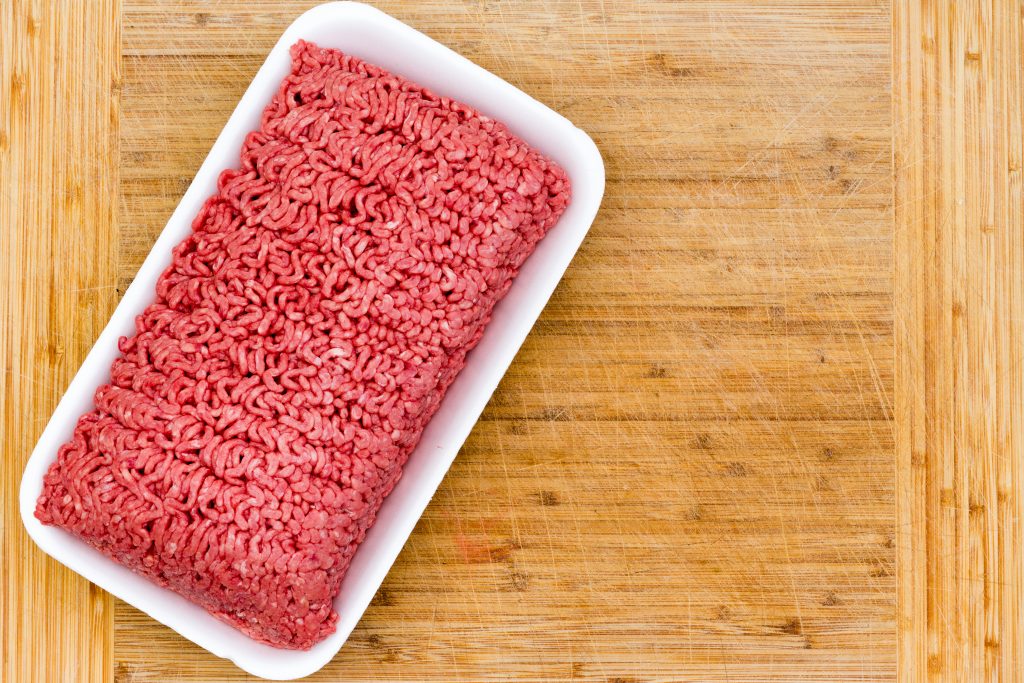
With misinformation being spread recently questioning the safety and quality of beef products sold in the United States, Associate Farm Editor Reagan Calk talked with Marination and Cured Meats Product Manager at JBT FoodTech, David Hayden, about the facts, and why it is safe to buy beef at the grocery store and directly from a farmer and rancher.
Originally from Kentucky, Hayden grew up on a commercial cow-calf and poultry operation. He majored in animal science at Murray State University and then went on to Oklahoma State University to pursue a master’s degree in meat science. Since graduating with his master’s in 2010, Hayden has been working in the meat processing realm. He now works for JBT FoodTech, manufacturing meat and food processing equipment, which is distributed around the globe for processors of all sizes.
Hayden first talked about misconceptions regarding the color of beef at the grocery store as it relates to quality.
“You see a lot of posts flying around social media trying to compare ground beef from the store to ground beef from your local farmer or rancher,” Hayden said. “The first thing I want to say is that ground beef is ground beef, whether it comes from the store or it comes directly from the farmer or rancher.”
Hayden said there is a scientific explanation as to why beef bought directly from the farmer or rancher may be a different color than the beef at the grocery store.
“The product you are buying from your farmer or rancher is typically packaged in what we call a ‘chub,’” Hayden said. “It is a plastic casing with a pound of ground beef and a clip on the end. That packaging is not oxygen permeable, versus the store package that has a nice film over the top…”
The product at the grocery store will typically be a bright cherry red color, Hayden said, while the product from the farmer or rancher will be more of a purple color.
“The reason being is that package at the grocery store is an oxygen permeable package,” Hayden said. “It allows oxygen to free flow through the film that you see over the top of ground beef. It allows the oxygen to actually bind to the myoglobin protein in the product, allowing it to bloom into a nice, bright cherry red.”
This means, Hayden said, that if you take ground beef in “chub” packaging and open it up, allowing it to sit and breathe for around ten to fifteen minutes, it will turn from that purple color to bright cherry red, just like the beef at the grocery store.

There is a lot of regulation around ground beef, Hayden said, and ground beef from the grocery store is not pumped full of additives and moisture.
“No ground beef sold on the market straight from the source from your farmer or rancher or from the grocery store can have anything other than ground beef in it,” Hayden said. “The USDA just will not allow it. That is part of the regulation around ground beef.”
In addition, Hayden said ground beef cannot be any less than 70 percent lean.
“That means the product you are purchasing has to be at least 70 percent protein and no more than 30 percent fat,” Hayden said.
Another misconception about beef bought directly from the farmer or rancher or the grocery store is that the red liquid in the meat is blood.
“It is not blood,” Hayden said. “When we are harvesting the animals, the animals are exsanguinated, and the blood is pumped out the animal.”
The red liquid seed protruding from the meat, Hayden said, is myoglobin and water.
“Standard protein is comprised of about 75 percent water, another 20 percent protein, and that last five percent kind of comes from fats and various connected tissues,” Hayden said.
Hayden also talked about why the United States imports beef from other countries.
“A lot of our farmers and ranchers know they can walk out in the pastures and see fields full of cattle all throughout the Midwest, the Great Plains, and the mountain states,” Hayden said.
The United States is one of the top consumers of beef in the world, Hayden said, and the number one ground beef consumer in the world.
“The reason why we do have to import some beef products is mainly geared toward our ground beef consumption and demand here in the United States,” Hayden said. “It is not very economical for us as farmers, ranchers, and processors to take high-quality whole muscle cuts like your ribeye’s and your chuck roasts and your sirloins and ground those up specifically to meet a ground beef demand.”
Hayden said his family sells beef directly to consumers and commercially, so he fully supports both methods, as they are both a great choice for consumers to purchase.
“The majority of our product ends up in the grocery store,” Hayden said. “When we talk specifically around ground beef, you could be consuming some Hayden Farms product when you go to the grocery store and buy your ground product.”
Not every person has access to a farmer or a rancher that sells direct, Hayden said, so demonizing consumers who do not have that option is only going to create a greater divide between the end consumer and modern-day agrarian agriculturalist. Consumers can support hard-working American ranchers by buying beef from the grocery store, or directly from the rancher. Eat beef!














